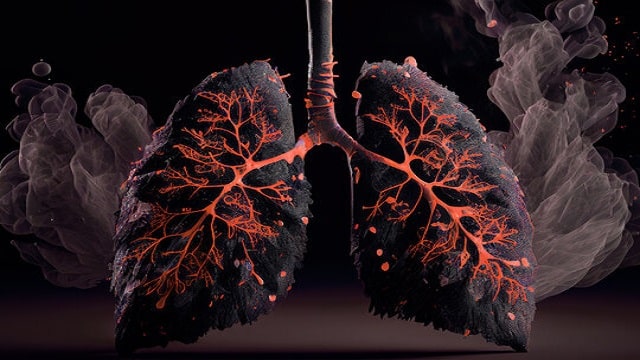Black Lung Disease
Black lung disease (BLD) is the blackening of the lungs due to inhalation of coal mine dust over a long period of time. This condition is also known as Coal Worker’s Pneumoconiosis or miner’s lung because it is commonly experienced by coal miners.
Symptoms of Black Lung Disease
Symptoms of black lung can vary depending on the level of dust exposure. In addition, symptoms do not appear immediately and develop over years.
As a result, most people with BLD do not notice symptoms until the condition has become severe. However, black lung commonly causes the following symptoms:
- Cough
- Hard to breathe
- Difficulty breathing
- Chest tightness
- Black mucus discharge
In some cases, black lung may not cause significant symptoms.
Causes of Black Lung Disease
The main cause of BLD is inhaling coal dust containing carbon and silica. These particles are very dangerous when inhaled because they will settle in the alveoli. The part mentioned earlier functions as a place for the exchange of oxygen and carbon dioxide.
When coal dust enters the alveoli, the lungs automatically try to expel the particles. On the other hand, if it does not work properly, it will cause chronic lung inflammation and eventually form scar tissue.
The disease is classified into two categories, simple and complicated. In simple cases, scarring affects only a small portion of the lung. When viewed using X-rays and CT scans, scarring looks like small, circular bumps.
Black lung that enters the complicated category is known as progressive massive fibrosis. The condition gets worse and affects larger areas of the lungs.
Black Lung Disease Risk Factors
Coal miners are the group most at risk for black lung disease. This condition is very rare in people who are rarely or never exposed to coal dust.
Black Lung Disease Diagnosis
As the name suggests, this condition is characterized by blackened lungs. The black spots on the lungs come from coal mine dust that settles. To detect this condition, a doctor needs to perform the following examinations:
- Medical history. The doctor will ask about your medical history, work, and symptoms experienced.
- Physical examination. After asking about the medical history, the doctor continues with a physical examination by examining the chest area and listening to the breathing rate.
- A breathing test to measure how well the lungs are taking in oxygen.
- Imaging tests, such as a chest X-ray or CT scan. These tests help your doctor see inside your lungs.
Black Lung Disease Treatment
According to Healthline, around 16 percent of coal workers generally experience black lungs. Unfortunately, there are no drugs that can cure this condition. Treatment is only to relieve symptoms and prevent complications. Treatment options include:
- Administration of drugs to reduce inflammation in the lungs and support respiratory organ function.
- Pulmonary rehabilitation to improve lung strength and breathing ability.
- Oxygen therapy to help the sufferer breathe. Usually, this treatment is intended for severe black lung disease.
- Lung transplantation if the lung condition is very severe.
Complications of Black Lung Disease
If left untreated, black lungs can lead to complications such as:
- Tuberculosis.
- Chronic obstructive pulmonary disease (COPD).
- Coronary artery disease (CAD) .
- Heart failure
- Lung cancer.
- Premature death.
- Decreased quality of life.
In 2016, the Centers for Disease Control and Prevention (CDC) reported that black lung reduced life expectancy by 12.6 years.
Black Lung Disease Prevention
The following are steps to prevent black lung disease for coal mine workers:
- Use a special mask when working in the mine.
- Immediately clean dust from exposed skin areas.
- Wash your face and hands before eating, drinking, or taking medicine.
- Do not smoke.
- Have regular chest x-rays.
